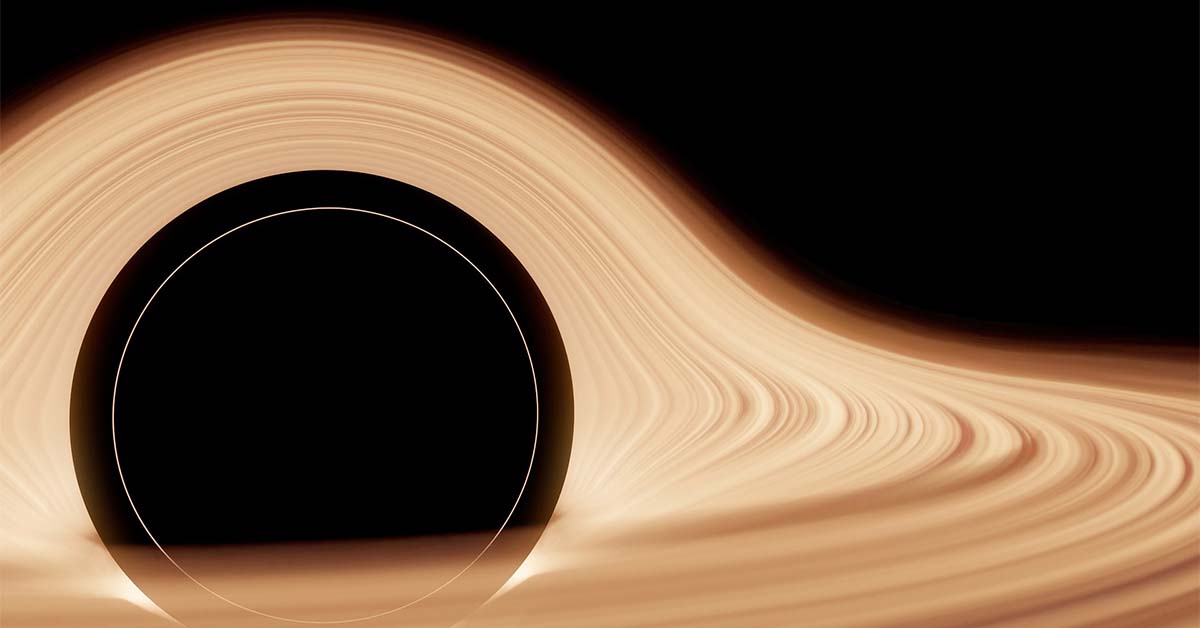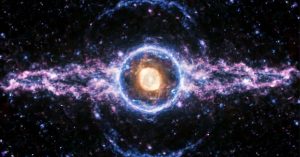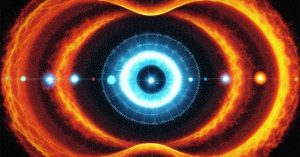Few phenomena in the cosmos captivate our imaginations as black holes do. These massive, gravitationally intense regions pull everything in their vicinity—including light—into their mysterious depths. Among the many mysteries that black holes present, the concept of singularity stands out as one of the most perplexing and debated ideas in astrophysics. Singularity suggests that within the heart of a black hole, matter is compressed into an infinitely dense point, creating a region where conventional physics breaks down. Yet recent theories, particularly those proposed by mathematician Roy Kerr, are shifting our understanding of black holes and their inner mechanics.
Black Holes: Mysteries of the Cosmos
Black holes are formed when massive stars collapse under their own gravity, creating a gravitational field so strong that not even light can escape. This defining characteristic gives black holes their “invisible” nature, as they do not emit detectable light or radiation directly. Black holes vary in size, from stellar black holes that form from collapsing stars to supermassive black holes at the centers of galaxies. All black holes possess a boundary known as the event horizon, which marks the point beyond which nothing can escape.
The Concept of Singularity: A Cosmic Puzzle
At the core of a black hole lies what scientists call a singularity—a point of infinite density where all matter is crushed to an infinitely small point. This notion, originally introduced by Stephen Hawking and Roger Penrose, suggests that the gravitational pull is so extreme that spacetime curves infinitely, breaking down the laws of physics as we know them. Singularity represents a limit to our current understanding of physics and has driven scientists to question and explore how the universe’s most fundamental laws apply under such extreme conditions.
Hawking and Penrose’s Foundational Theory
The work of Stephen Hawking and Roger Penrose in the 1970s provided the foundational theory of singularity within black holes, advancing the field of cosmology and challenging scientists to rethink gravitational physics. Their research demonstrated that black holes could create conditions where gravity would dominate to the point of forming a singularity. However, while their theory has been widely accepted, it also raised important questions about the nature of singularities and the limitations of classical physics in these extreme environments.
Limitations of Current Singularity Models
One of the key challenges in studying black hole singularities is that they defy the principles of classical physics and general relativity. In a singularity, density becomes infinite, creating a situation where established physical laws no longer hold. This paradox has puzzled scientists for decades, as theories that work well in less extreme conditions collapse in the face of singularity. Physicists believe that an explanation may lie in a new synthesis of quantum mechanics and general relativity, though such a theory remains elusive.
Kerr’s Alternative Perspective on Black Holes
In recent years, mathematician Roy Kerr has proposed an alternative theory that challenges the traditional understanding of singularity. In his paper, titled “Do Black Holes Have Singularities?” Kerr suggests that not all black holes contain singularities as traditionally conceived. Kerr’s research focuses on rotating black holes, known as Kerr black holes, which behave differently than their non-rotating counterparts. This distinction offers a fresh perspective on black hole structure and dynamics.
Rotating Black Holes: Understanding Kerr Black Holes
Unlike static, non-rotating black holes, Kerr black holes rotate, causing unique distortions in spacetime. This rotation creates a region called the ergosphere, where spacetime is dragged along with the black hole’s spin. The ergosphere offers new possibilities for understanding black hole energy dynamics, as particles within this region could theoretically escape a black hole by tapping into its rotational energy.
The Ergosphere: A New Realm of Energy
The ergosphere is an area around the Kerr black hole where spacetime itself is twisted due to the black hole’s rotation. This phenomenon is significant because, within the ergosphere, objects can move faster than the speed of light relative to distant observers. The ergosphere provides a potential mechanism for extracting energy from a black hole, an idea first suggested by physicist Roger Penrose in the Penrose process. While technically daunting, this concept opens up possibilities for energy research in astrophysics.
Ring Singularity: A Shift from Point Singularity
Perhaps one of Kerr’s most intriguing contributions is the idea of a ring singularity. Unlike the traditional point singularity found in non-rotating black holes, Kerr black holes contain a singularity shaped like a ring. This ring structure changes the internal geometry of the black hole, allowing for new theoretical explorations of what lies within. In this model, spacetime within the black hole does not collapse to a single point, potentially allowing new types of particle trajectories and avoiding the infinite density problem associated with point singularities.
Implications of a Ring Singularity for Spacetime Geometry
A ring singularity modifies the geometry of spacetime, which affects the behavior of light and matter within the black hole. This distinction provides an opportunity for scientists to explore new models of black hole interiors, including possibilities that avoid the problematic infinities of traditional singularities. The presence of a ring singularity also implies that regions within the event horizon might contain stable paths or even “exits” to other parts of spacetime.
Trajectories and Tangential Paths in Black Holes
One of Kerr’s insights involves the realization that not all paths, or trajectories, within a black hole lead directly to the singularity. In certain cases, particles or light entering the black hole might avoid the singularity, instead following tangential or “sideways” paths. This concept could open up possibilities for understanding black hole interiors as more than singular points of no return, suggesting complex structures within the event horizon.
Theoretical Implications: Beyond the Event Horizon
Kerr’s theory of tangential paths within the event horizon has profound implications. It suggests that particles entering a rotating black hole may not face an inevitable journey to a point of infinite density but might instead experience a more varied and less deterministic path. This idea could have far-reaching effects on our understanding of black holes and on theories related to spacetime, causality, and even wormholes.
Challenging Long-Held Assumptions in Astrophysics
Kerr’s work has sparked considerable debate and encouraged astrophysicists to re-evaluate some of the most entrenched ideas about black holes. By questioning the inevitability of singularity in all black holes, his theory offers new perspectives on cosmic evolution and the nature of matter and energy under extreme gravitational conditions. This work emphasizes the importance of continued exploration and challenges the assumption that black holes are uniform in their structures.
Quantum Mechanics vs. General Relativity
The study of black holes has consistently highlighted the limitations of classical physics, particularly when trying to reconcile quantum mechanics with general relativity. Quantum mechanics governs the behavior of particles at microscopic scales, while general relativity explains the structure of spacetime on a cosmic level. Black holes bring these two theories into conflict, especially at the singularity, underscoring the need for a theory of quantum gravity to fully explain these enigmatic regions.
Unanswered Questions and Future Research
Despite Kerr’s innovative insights, significant questions remain. What truly happens to matter and information as they approach the event horizon? Can a theory of quantum gravity provide a resolution to the singularity problem? These questions continue to drive research, with scientists eager to probe the fundamental workings of black holes using both theoretical and observational tools, including the Event Horizon Telescope and gravitational wave observatories.
Conclusion: The Path Forward in Black Hole Exploration
Roy Kerr’s theories represent a major advancement in our understanding of black holes, challenging the idea that singularities are inevitable in every case. His work paves the way for further study, encouraging scientists to question assumptions and to explore alternative explanations for these cosmic mysteries. As we expand our knowledge of black holes, Kerr’s contributions remind us that scientific inquiry is an ever-evolving journey, one that continues to reveal the profound mysteries of the cosmos.




